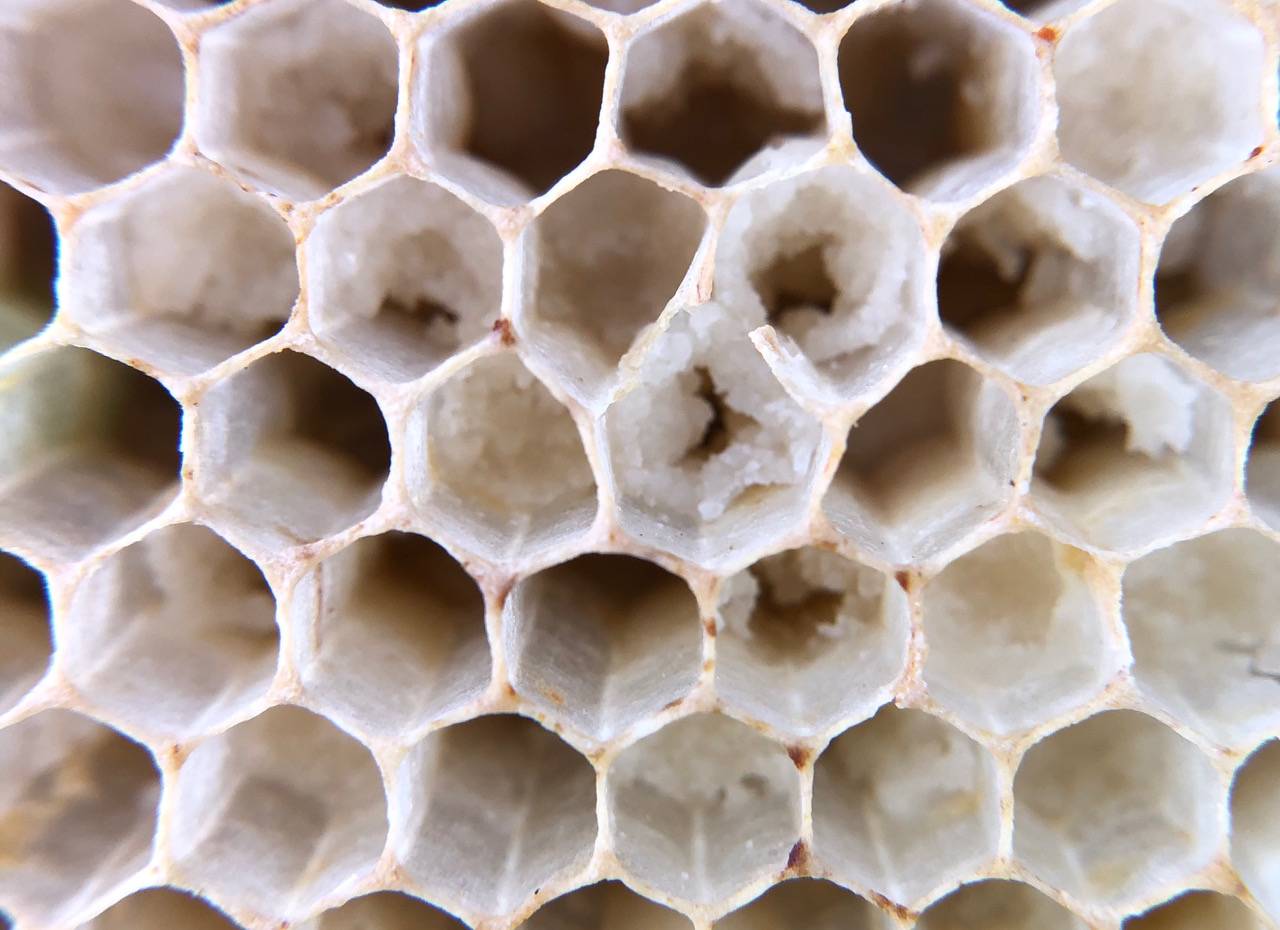Bee Blog - April 2021
Last month I was explaining how I had left a super of honey on some of the hives as additional feed for the bees during the winter and the pro’s and con’s of doing this or feeding fondant. I explained how I had removed what appeared to be empty supers on two of the hives and replace them with a feeder containing a 1:1 mix of sugar and water. My photograph this month shows the view of the comb that I took from one of the hives. The photograph shows that at the bottom of the cells is what appeared to be lenticular particles about the size of small grains of rice. I wondered what they were.
My first thought was that these “grains” were the eggs of the beekeepers old “friend” the wax moth. As I have mentioned before, this moth can cause havoc in wax frames. The bees usually keep on top of the moths in the hive but as the honey in this super had been eaten by the bees perhaps they didn’t bother eradicating the moths from empty frames and these were their eggs. I scraped the grains out onto a sheet of paper for a closer inspection. They certainly looked like moths eggs but surely some would have already hatched out into lave which would determine what they were. Then another thought struck me, perhaps this was just the residue of the honey which could have granulated over winter and this was the shapes that were left as the bees consumed the honey.
How to tell? Taste would be a good indicator, if it was sweet it would be honey, if it wasn’t sweet !!! I know celebrities are happy to eat bugs and creepy crawlies on tv reality shows but did I really want to taste these grains and find out they were the eggs and, even worse, the grubs of the wax moth. What to do? I thought I could ask my Wife to do a blind tasting. No that was probably not a good idea. So in the end I licked my finger, touched some of the grains, gritted my teeth and tasted them. Sweetness, the grains were not eggs they were granulated honey, the bees had just consumed this honey in such a way as to carve these unusual shapes. One learns through experience.
The weather continued to warm this month. In the early part of the month it was still too cool for me to open up for full hive inspections but I did carry out a few spring cleaning jobs. The bases of the hives are perforated to allow for ventilation. There is a mesh that allow air in and out but it is too small to allow the bees through. Debris from the brood nest, wax capping from cells and sometimes dead bees, falls down onto the base and sometimes can clog up the bottom of the hive. Generally bees are very good at housekeeping and will clear things themselves but I like to start the season with a clean base.
As the month came to a close the weather became warmer and I decided it was time to re house the nucleus colony that I had made from the swarm that landed in my garden during summer last year, June 2020 blog. From the activity at the entrance to the nucleus they appeared to be a strong and growing colony. More bees were beginning to leave and enter than from some of the other full sized hives. I wanted to wait until it was warm enough to move them into a full sized hive but I didn’t want to wait too long and have them build up rapidly, find they didn’t have enough room and decide they wanted to swarm. Putting them into a full sized hive would double the space available to them.
On a warm Sunday afternoon I made the switch placing the original six frames in the middle of a new hive with new frames either side of the original frames. It is important to move them in the same order as they had been in the nucleus to cause as little disturbance as possible. Whilst moving the frames one by one I spotted the queen still marked with her white dot of paint. I hope she likes her new home.
